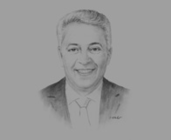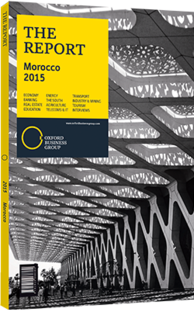El Mostafa Sajid, President, Moroccan Association of Textile and Clothing Industries: Interview

Interview: El Mostafa Sajid
How is the outlook for Morocco’s textile sector?
El Mostafa Sajid: Although we have not seen a lot of growth over the past few years, the textile sector is in good shape. We exported $3.7bn in 2014, for an increase of 4% over 2013. The sector outlook is positive, especially for proximity sourcing. Europe and the US are good niche markets, and fast fashion is the main driving force behind the Moroccan textile industry today.
What are the keys to the sector’s growth forecast?
SAJID: Morocco’s most important niche market is fast fashion, which is on the rise at the international level. In Europe fast fashion accounts for 20% of the sector and is set to increase to 35% over the next ten years. However, the textile sector also faces some obstacles and has some structural issues to overcome.
The main challenge is creating a fully developed, balanced and internationally competitive sector. While we have very sophisticated processing and manufacturing activity, upstream activities and distribution activities in the country require further development. We conducted a strategic study to identify the opportunities and missing links across the six ecosystems identified in the industry, with private and public sector actors working in tandem to reach our goals.
Over the past 60 years, Morocco has developed substantial know-how, and the country’s textile units and training centres are strategic assets for our international competitiveness. We also have a strong focus on innovation and research that has inspired collaboration with the country’s first public fashion graduate school, Casa Moda Academy, and the Higher Institute of Textile and Clothing Industries.
What strategic objectives is the sector pursuing, and what benefits will they have for the economy?
SAJID: We expect to create 100,000 jobs by 2020, increase our exports by more than $7bn over the same period and expand our share of the domestic market. At present, the local market is valued at around $4.5bn, and we have about a 45-50% market share. We expect to increase this to 60% by 2025, given an overall domestic market value of $10bn. These are ambitious and challenging objectives, especially in terms of export capacity. However, the opportunities are numerous, as important Asian countries like India and China are starting to supply their domestic markets, creating new scope for proximity sourcing that can have a positive impact on Morocco’s industry.
How is the informal sector affecting the industry?
SAJID: Taxation in Morocco remains uneven, as formal, compliant companies are forced to compete with a large informal segment of the market. This is a very important concern for the textile industry. According to the strategic study we conducted, the domestic market experienced average year-on-year growth of 6-7% over the past five years; however, the lion’s share of this growth benefitted the informal segment.
Nevertheless, there has been a notable change in the attitude of the public authorities, which are showing a real desire to improve the situation. We also hope that the decline of the euro against the dollar will cause the informal sector to lose some of its strength.
Which markets offer the most promise for exports?
SAJID: We ended 2014 with 10% growth in the EU market, thanks to a strong presence in Spain, a stable French market and double-digit growth in the UK and Portugal. Meanwhile, trade with the US was up 26%. Despite our free trade agreement with the US, euro-dollar parity was an obstacle to development. The end of parity could be a real catalyst for activities in the US market, and the monetary climate is in our favour, though we need to better tailor our products to suit the market.
Africa has a lot of potential for certain niche markets, including home textiles and technical textiles. Germany is also an interesting market to develop. However, fierce international competition remains the primary challenge that Moroccan textile exporters face.
You have reached the limit of premium articles you can view for free.
Choose from the options below to purchase print or digital editions of our Reports. You can also purchase a website subscription giving you unlimited access to all of our Reports online for 12 months.
If you have already purchased this Report or have a website subscription, please login to continue.

